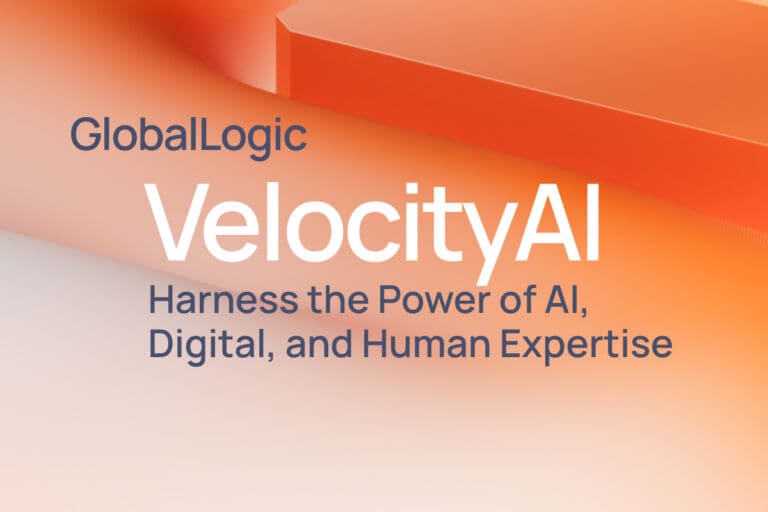- Services
Technology Capabilities
Technology Capabilities- Product Strategy & Experience DesignDefine software-driven value chains, create purposeful interactions, and develop new segments and offerings.
- Digital Business TransformationAdvance your digital transformation journey.
- Intelligence EngineeringLeverage data and AI to transform products, operations, and outcomes.
- Software Product EngineeringCreate high-value products faster with AI-powered and human-driven engineering.
- Technology ModernizationTackle technology modernization with approaches that reduce risk and maximize impact.
- Embedded Engineering & IT/OT TransformationDevelop embedded software and hardware. Build IoT and IT/OT solutions.
- Industries
- GlobalLogic VelocityAI
- Insights
BlogsDecember 16, 2024Gene LeybzonAccelerating Digital Transformation with Structured AI Outputs
This code produces the following output that can be imported into the candidate trackin...
 BlogsOctober 30, 2024Yuriy Yuzifovich
BlogsOctober 30, 2024Yuriy YuzifovichAccelerating Enterprise Value with AI
Discover how financial services integrations are transforming from standalone offerings...

- About Us
Press ReleaseGlobalLogicMarch 11, 2025GlobalLogic Launches VelocityAI to Harness the Power of AI, ...
VelocityAI combines advanced AI technologies with human expertise, helping businesses r...
 Press ReleaseGlobalLogicJanuary 10, 2025
Press ReleaseGlobalLogicJanuary 10, 2025GlobalLogic Announces Leadership Change: Srini Shankar Appointed ...
SANTA CLARA, Calif.–January 10, 2025– GlobalLogic Inc., a Hitachi Group Com...

- Careers
Published on April 18, 2022Cloud-Driven Innovations: What Comes Next?
View all articlesRaja RenganathanSenior Vice President, Cloud EngineeringShareRelated Content Richard Lett5 March 2025
Richard Lett5 March 2025 Yuriy Yuzifovich4 March 2025View All Insights
Yuriy Yuzifovich4 March 2025View All Insights GlobalLogic26 February 2025
GlobalLogic26 February 2025Let's start engineering impact together
GlobalLogic provides unique experience and expertise at the intersection of data, design, and engineering.
Get in touchCross-IndustryCloud computing has revolutionized the ways we store, manage, and process data, with fully 82% of enterprise survey respondents indicating they’d deployed a hybrid cloud in their organization by late 2020. Cloud technology is resolving some of the most persistent computing challenges and roadblocks. Beyond this, though, it is transforming business in myriad ways.The business benefits of the cloud are many; for starters, it’s enabling organizations to build better, smarter applications much faster, cutting down the time to implement and deploy, as well as capital expenditures. This higher velocity development cycle empowers companies to take their products to market much quicker, even as opportunities for experimentation and testing increase. What once took three months to deploy on-site takes just minutes in the cloud – no new server hardware or enterprise software required.
Here are just a few examples of how the cloud is making the product and platform innovations an exceptional reality.
DevSecOps
Over three-quarters of security team professionals continue to report that devs find too few bugs too late in the process, according to GitLab’s 2021 Global DevSecOps Survey.
Bugs can have massive consequences. Last year, the average cost of a data breach topped $4.24 million USD, the highest level in the 17 years IBM has tracked this figure. What’s more, researchers found that the maturity of an organization’s cloud migration had a direct and measurable impact on the severity and cost of a breach.
“Organizations further along in their cloud modernization strategy contained the breach on average 77 days faster than those in the early stage of their modernization journey,” the report states.
Taking a security-first approach to DevSecOps is mission-critical. Take the financial services industry, for example, where cloud-enabled services are facilitating more seamless, rapid transactions than ever before across authentication systems, transaction processing systems, payment and billing systems, and databases. Relying on reported data to uncover fraudulent activities leaves the institution vulnerable and reactive.
Using AI-enabled technology and machine learning on data from these various sources in the cloud enables us to train the algorithm in fraud detection so anomalies can be flagged immediately. You can see here how this technology helped a retail bank with 14 million+ active customers and multiple brands achieve a significant reduction (50%) in certain types of fraud and save a predicted $1.3 to $3.9 million USD each year.
API-led Integrations
Point-to-point integrations are difficult to maintain and modify, requiring a great deal of time and labor and, too often, still resulting in failure.
API-led integration ensures the seamless flow of data between applications for improved accessibility, enhanced visibility, and greater agility. Solutions become reusable and can be accessed by multiple users inside and outside the organization.
Low Code No Code (LCNC)
Today, Gartner research says that on average, 41% of employees outside of IT are tasked with customizing or building data or technology solutions. Gartner predicts that half of all new low-code clients will come from business buyers that are outside the IT organization by year-end 2025, too.
And as my colleague Nitin Unni pointed out in his recent paper Agile Transformation of the Modern Enterprise, with an increasing need for agile digital transformation and market realities, LCAP/NCAP solutions could become a game-changer for modern businesses. Be sure to give that a read for the factors you should consider in choosing the right platform.
LCNC in the cloud enables developers to build solutions much faster, as well as redesigning and automating workflows. However, it’s still important to have safeguards including data and process governance and security in place to prevent any unintended consequences.
DesignOps
DesignOps is essential for building standardization and scale into workflows where teams are building digital products. When coupled with cloud technology, this operational management of designers and optimization of design processes can help your organization overcome technical debt, reduce overhead costs, and mitigate performance gaps.
DesignOps is helping brands reimagine the customer experience, as well. When an iconic fast food brand sought to express itself in a digital context, for example, we designed and delivered operational service enhancements to ensure a consistent, coherent experience for customers worldwide. The cloud facilitates rapid iteration, testing, and deployment at a scale that would take years to achieve in the real-world environment alone.
Universal Observability/Open Telemetry
Formed through the merger of OpenTracing and OpenCensus, Open Telemetry provides standardization in distributed telemetry data. It enables developers to instrument code once, then swap out monitoring tools, compare competing solutions, and run numerous different monitoring solutions in production for varying needs.
What Comes Next
Much innovation and digital transformation are already happening in the cloud. It’s a trend we can expect to see continue as companies increasingly move their offerings to cloud-native platforms, seeking to automate their most time-consuming, labor-intensive processes.
Microservices platforms, the most commonly deployed architectures in the creation of new experiences, is another technology that is working to reduce friction for DevSecOps by enabling horizontal scale, reducing time to market, and improving ROI.
Early results are promising; GlobalLogic has seen savings of up to 75 person-months for a typical large-size deployment project. It’s already the foundation platform for companies as diverse as a leading pet insurance provider and a well-known third-party administrator of safety and compliance solutions.
Decision-makers must also consider how the metaverse and web3.0 are going to impact cloud-driven innovations in tech. With content and applications in the cloud and consumers experiencing them in increasingly immersive ways, ecommerce and marketing are ripe for a dramatic transformation.
How can cloud adoption help your organization modernize, improve customer experiences, achieve efficiencies, and scale successful workflows? GlobalLogic’s cloud engineering professionals are leading the way in design led product and platform engineering and transition clients to fully digital. Let’s explore the possibilities together – reach out to Cloud@GlobalLogic.com.
